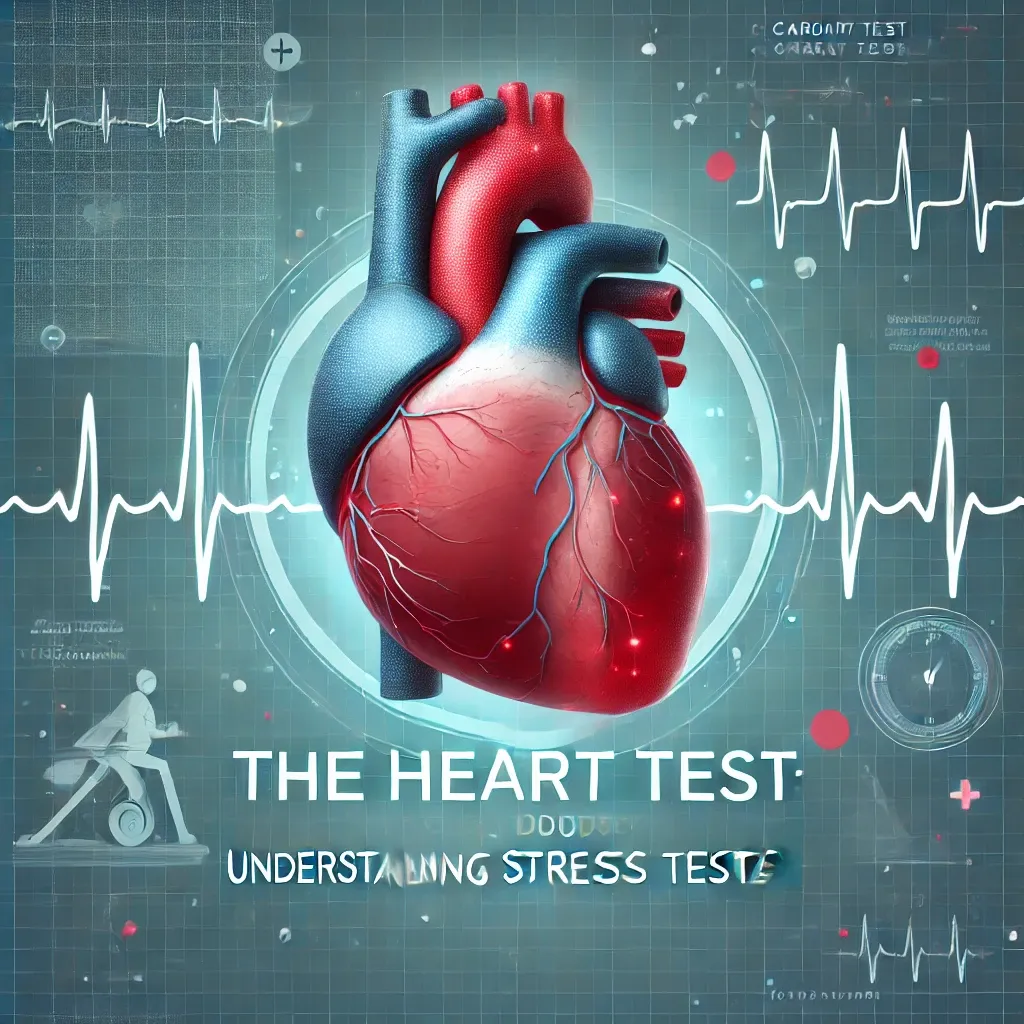Stress Testing 101: Is Your Heart Up to the Challenge?

Good morning everyone with the Varrock Street Journal Community,
If you’re reading this, chances are you’ve at least heard of a ‘stress test.’ Maybe you haven’t had one yourself, but think back—has a family member or friend mentioned undergoing one? And more importantly, were they thrilled about it? Probably not! Take a moment to consider what a stress test might involve and why someone would need one. If you’re unsure, don’t worry—that’s exactly what we’re here to discuss today. By the end of this article, you’ll have a solid understanding of what a cardiac stress test is, why it’s done, and what the results can reveal. We hope you find today’s digestible breakdown both informative and practical!
Cardiovascular health is a cornerstone of overall well-being, yet heart disease remains one of the leading causes of death worldwide. This week, we’re focusing on cardiac stress tests—essential tools in diagnosing and managing heart disease. What exactly do these tests tell us, who needs them, and how do different types compare? Let’s dive in.
Understanding Cardiac Stress Tests
A cardiac stress test evaluates how well your heart functions under increased demand. By monitoring heart activity during exercise or medication-induced stress, doctors can detect conditions like coronary artery disease (CAD) and arrhythmias, assess heart function after a procedure, and guide treatment decisions.
Types of Cardiac Stress Tests
- Exercise Stress Test (Treadmill Test)
- How it works: You walk on a treadmill or pedal a stationary bike while an electrocardiogram (ECG) records your heart’s electrical activity. The intensity gradually increases to assess how well your heart handles exertion.
- What it tells us: Identifies abnormal heart rhythms, inadequate blood supply, and exercise tolerance.
- Who should get it? Patients with suspected heart disease who can safely perform physical activity.
- Pharmacologic Stress Test
- How it works: For patients unable to exercise, medications like dobutamine, adenosine, or regadenoson simulate stress by increasing heart rate or dilating blood vessels.
- What it tells us: Evaluates blood flow and heart function without physical exertion.
- Who should get it? Individuals with mobility limitations or contraindications to exercise.
- Stress Echocardiogram
- How it works: Combines an ultrasound of the heart with exercise or medication-induced stress to visualize heart wall motion and blood flow.
- What it tells us: Detects weakened heart muscle movement, which can indicate blockages.
- Who should get it? Those needing a detailed look at structural heart issues.
- Nuclear Stress Test (Myocardial Perfusion Imaging)
- How it works: A radioactive tracer is injected into the bloodstream, and a gamma camera captures images of heart muscle blood flow before and after stress.
- What it tells us: Highlights areas of reduced blood flow, helping to pinpoint blockages.
- Who should get it? Patients with high suspicion of CAD or previous inconclusive test results.
Why This Matters
Cardiac stress tests help detect heart disease before symptoms become severe and allow for early intervention. They play a crucial role in determining whether lifestyle changes, medications, or procedures like stenting or bypass surgery are necessary. By identifying heart problems proactively, these tests reduce the risk of heart attacks and other serious complications.
Potential Complications of Not Having a Stress Test
- Undiagnosed Coronary Artery Disease (CAD): Without detection, CAD can progress and lead to heart attacks or heart failure.
- CAD occurs when the coronary arteries become narrowed or blocked due to the buildup of cholesterol and fatty deposits (plaque), reducing blood flow to the heart muscle.
- Silent Ischemia: Some individuals experience reduced blood flow to the heart without noticeable symptoms, which can worsen over time.
- Silent ischemia refers to episodes of reduced blood flow to the heart muscle without noticeable symptoms, increasing the risk of heart damage over time.
- Uncontrolled Arrhythmias: Abnormal heart rhythms that go undetected can increase the risk of stroke, heart failure, or sudden cardiac death.
- Arrhythmias are abnormal heart rhythms that, if left untreated, can lead to serious complications such as stroke, heart failure, or sudden cardiac death.
- Missed Early Intervention Opportunities: Many heart conditions are more manageable when caught early through testing, allowing for lifestyle modifications and medical treatment before a major cardiac event occurs.
- Early detection of heart conditions allows for timely interventions, such as lifestyle changes and medical treatments, which can prevent major cardiac events.
Spotlight on Future Applications
Advancements in technology are leading to AI-assisted stress test analysis, which can detect abnormalities with even greater accuracy. Additionally, wearable technology may soon allow for remote, non-invasive stress testing in real-world environments, making heart health monitoring more accessible.
Multiple Choice Questions
- What is one of the most common reasons a cardiac stress test is performed?
- A) To diagnose diabetes
- B) To evaluate heart function under stress
- C) To assess lung capacity
- D) To measure cholesterol levels
- Answer: B) To evaluate heart function under stress
- Which of the following is NOT a potential complication of undiagnosed coronary artery disease?
- A) Heart attack
- B) Silent ischemia
- C) Increased lung capacity
- D) Uncontrolled arrhythmias
- Answer: C) Increased lung capacityDo you think widespread early screening for heart disease would reduce overall healthcare costs? Why or why not?
Final Thoughts
Heart disease doesn’t always come with warning signs, making proactive testing vital. Whether you’re experiencing symptoms, have risk factors, or just want to understand your heart health better, talking to your doctor about stress testing could be a life-saving decision.
Stay heart-smart, The Varrock Street Journal Team
Here is a video of a stress test if you would like to see it done!
References:
- American Heart Association. "Types of Stress Tests." heart.org
- Mayo Clinic. "Cardiac Stress Test Overview." mayoclinic.org
- National Heart, Lung, and Blood Institute. "Stress Testing in Heart Disease." nhlbi.nih.gov
